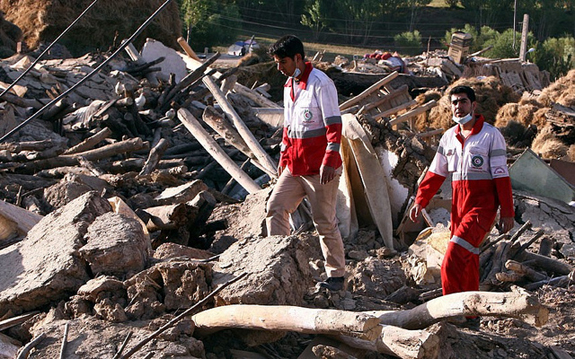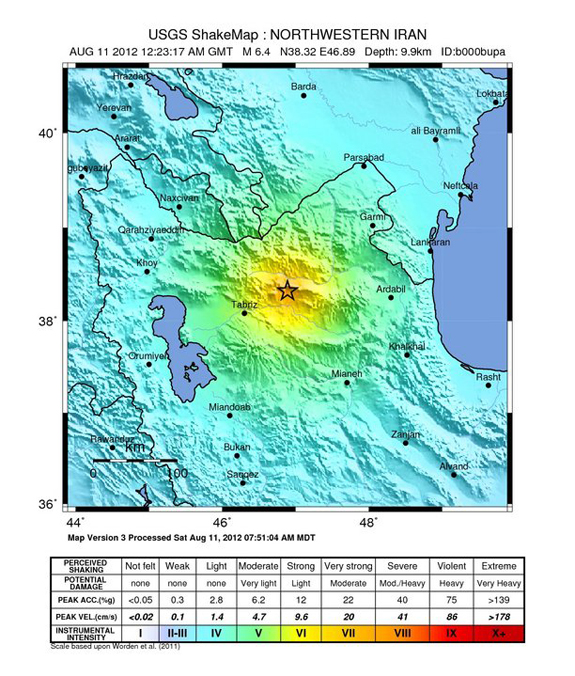What Caused the Deadly Iranian Earthquakes?
Straddling the seam between the Eurasian and Arabian tectonic plates, Iran has a history plagued with earthquakes

Rescue workers search through the rubble caused by two large earthquakes earlier this week. Photo: Globovisión
At 23:45 UT, 4:15 am local time Sunday morning, an incredibly shallow magnitude 6.4 earthquake hit just 58 kilometers from the city of Tabriz, Iran, and the homes of more than a million of people. That initial shock was followed by a magnitude 6.3 quake just 11 minutes later, and 20 aftershocks of magnitude 4 or above in the early half of this week.
The swarm has so far claimed the lives of 306 people, and as the Associated Press reports, the search for survivors has been called off. Photos from the region demonstrate the extent of the damage.
Straddling the seam between the Eurasian and Arabian tectonic plates, Iran’s history is plagued with earthquakes. Most notably in recent years is a magnitude 6.7 event in 2003 that flattened the city of Bam and killed at least 26,000. The most recent quake, however, “came as a surprise” says Earthquake Report, because the location was quite far off of the actual fault.
The August 11, 2012 M 6.4 and M 6.3 earthquakes in northwestern Iran occurred as a result of oblique strike-slip faulting in the shallow crust of the Eurasia plate, approximately 300 km east of the plate boundary between the Eurasia and Arabia plates.
Strike-slip earthquakes are when two pieces of Earth, with stress built up from grinding against each other for many years, suddenly slip in a side-by-side motion and travel in the “along strike” direction. The lurch sends waves traveling through the surrounding rocks which can cause the earth to jolt and roll at the surface. An earthquake that occurs away from a fault is known as an intraplate earthquake, as the rocks slipping past one another are both part of a single tectonic plate, rather than between two opposing plates. Intraplates earthquakes are usually smaller, and much rarer, than the interplate variety. Earthquake Report:
The two earthquakes are separated by just 10 km in an east-west direction. Focal mechanisms, describing the style of faulting for the earthquakes, suggest slip on either fault planes striking roughly east-west, or those striking roughly north-south. Because these earthquakes are intraplate events, away from the main plate boundary structures in the region, precise identification of the causative fault(s) is difficult at this time, though their offset suggest they may be associated with an east-west striking structure.
Despite an uneasy relationship between Iran and the United States fueled by the former’s quest to develop a nuclear program, the New York Times reports that those seeking to send aid to affected Iranians shouldn’t need to worry about political roadblocks.
More from Smithsonian.com:
/https://tf-cmsv2-smithsonianmag-media.s3.amazonaws.com/accounts/headshot/smartnews-colin-schultz-240.jpg)

/https://tf-cmsv2-smithsonianmag-media.s3.amazonaws.com/accounts/headshot/smartnews-colin-schultz-240.jpg)